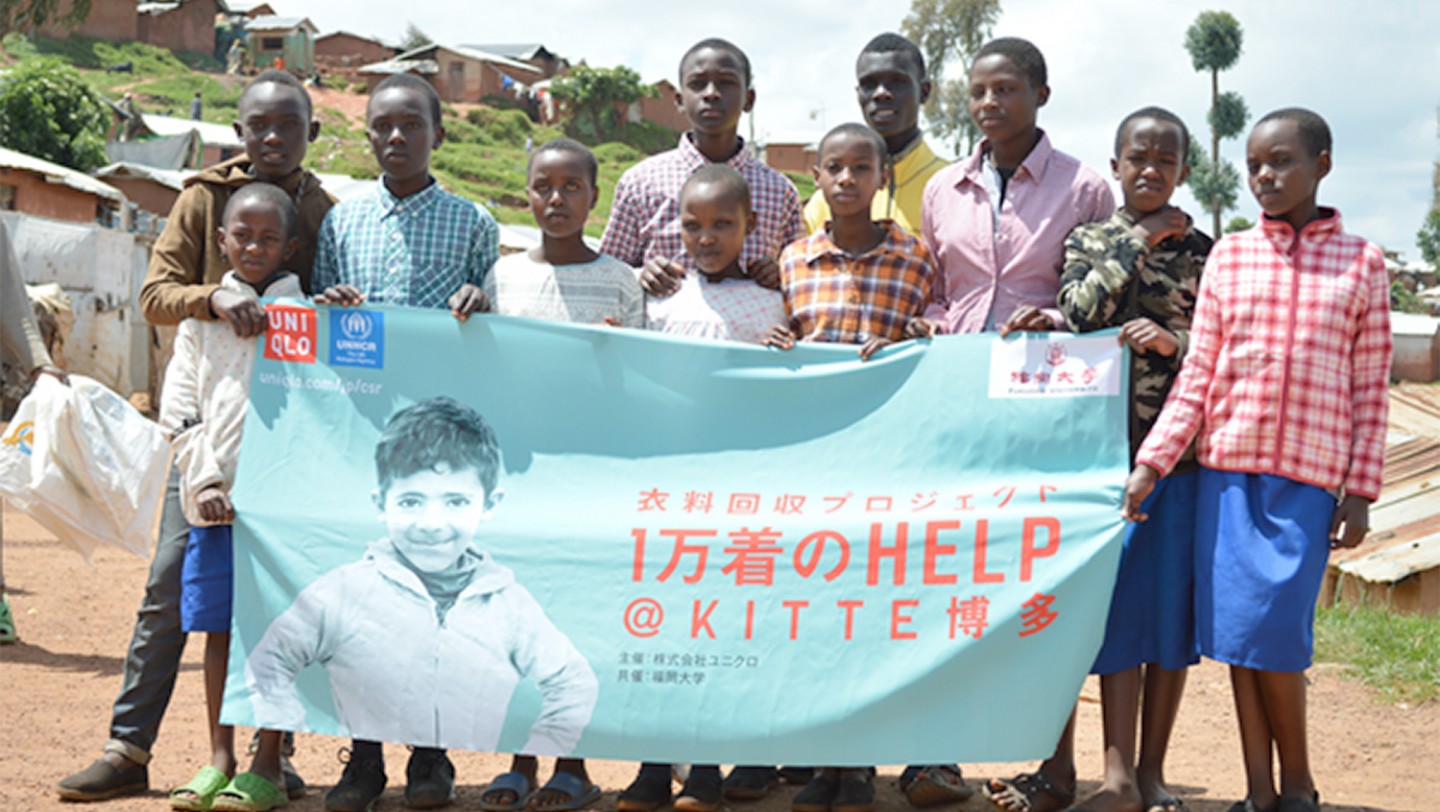Watch Video: Mahama Refugee Camp, One Year On
“Mahama today is a community.”
Mahama Refugee Camp, RWANDA – 22 April 2016: Today, Mahama camp has been open for one year—in which it already became the largest refugee camp in Rwanda. Home to nearly 50,000 Burundian refugees, Mahama has surpassed the five other camps in this small country which are hosting over 81,000 refugees from the Democratic Republic of Congo (DRC). Mahama is already bigger than the two largest Congolese camps—Kiziba hosting 17,300 and Kigeme home to 19,000—combined.
Mahama camp opened on 22 April 2015, following a sudden mass influx of refugees from Burundi who were fleeing violence related to the presidential elections. In a span of just three weeks – between 1 April and 22 April – there were already 9,500 Burundian refugees in urgent need of life-saving humanitarian assistance. Just one year later, the number of Burundian refugees in Rwanda today stands at nearly 76,500, of which two thirds are living in Mahama camp.
The Government of Rwanda generously allocated the land for Mahama camp on 17 April 2015. The Ministry of Disaster Management and Refugee Affairs (MIDIMAR) and UNHCR immediately went to the site with key UN and NGO partners to assess its suitability for a refugee camp. By the following day, UNHCR had already deployed a site planner to set up the organization of the new camp. Within a week, UNHCR and partners had set up emergency communal shelters to enable the huge numbers of refugees to live in basic safety and dignity until UNHCR could procure family tents, as well as emergency health care and latrines and water facilities.
“When we came to register the refugees in the first week of the camp, there was no construction, there were no facilities for water, and there were so many refugees it was in a serious emergency condition.” Nadine Bukuru is a staff member of UNHCR who has worked in Mahama camp since it first opened. She recalls the dramatic conditions in those early days of the camp’s existence, and remarks upon how much it has evolved. “Because of the huge numbers of refugees, we put up large communal shelters and prepared hot meals, just to ensure people had basic support in the first days,” recalls Bukuru. “Now, the look of the camp has changed so much. You can see that Mahama is clean, people are taking care of their little plots. It’s organized; Mahama today is a community.”
In just a year, Mahama camp has changed dramatically. Refugee Kaneza Milleyi, age 17, gave her take on living in the camp. “It is a clean camp, there is lots of sanitation, and the people working here seem caring and want to take care of us,” Milleyi says. Starting in 2015, UNHCR has been moving refugees out of their emergency family tents into semi-permanent homes. Since UNHCR set up a market in the camp, it has thrived—refugees buy and sell vegetables and clothes in a market, where they can trade with local Rwandan vendors. “Since the opening of the market, the sense of society, of socio-economic activity, has really flourished,” Bukuru says.
UNHCR constructed dozens of classrooms in a nearby Government school, and today all refugee children in Mahama have access to regular education. In the beginning, UNHCR provided health care for refugees under plastic sheeting, but today there is a solid health center and the health condition of refugees has significantly improved.
Saber Azam, the UNHCR Representative in Rwanda, visits the camp regularly and also can see the improvements that have occurred in the course of the last year. “People are cooking for themselves, doing small business in the market, and the children are going to school with Rwandan children,” Azam says. “So there is much more of a feeling of normal life, which is so important for refugees’ well-being.”
However, more and more refugees continue to flee to Rwanda every day, which means that despite the positive changes, Mahama camp still needs a lot of work. After one year, the family tents UNHCR set up a year ago are weather-worn and refugees need to move into more durable structures so they can try to live a semblance of a normal life. And with dozens of refugees arriving at the camp each week in need of urgent humanitarian aid, the needs are constantly growing. UNHCR needs USD 63 million to ensure the protection and basic needs of Burundian refugees in 2016, but to date has only received USD 13 million, from the United States of America, Government of Japan, and European Commission for Humanitarian Aid (ECHO).
“Thanks to the support of our key donors and partners, we were able to deliver the critical life-saving assistance Burundian refugees needed in 2015, but we cannot risk going backwards and falling behind those achievements,” warns Azam. “I urge the international community to support UNHCR urgently, so we can help these refugees until it is safe for them to return home.”
By Martina Pomeroy
UNHCR External Relations Officer
Kigali, Rwanda

![Hon. Minister of MIDIMAR, Seraphine Mukantabana and Dr. Jacques Rogge, UN Special Evoye for Youth Refugees and Sports offer a ball to the captain of female volleyball team in Mahama refugee camp [Photo/ IOC Shaban Masengesho]](https://webarchive.archive.unhcr.org/20160924162243im_/http://www.unhcr.org/rw/wp-content/uploads/sites/4/2016/06/splash-13-1440x812.jpg)
